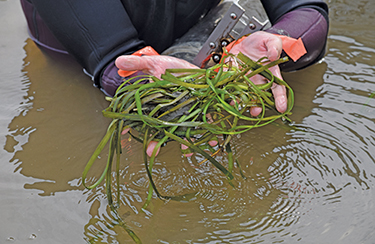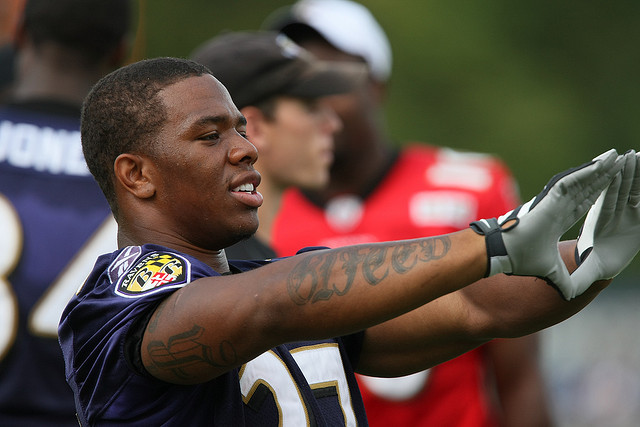By Tom Horton
Bay Journal News Service
It’s a year ago, sunny summer morning overlooking the Choptank River. We’re discussing what it has all meant, studying Chesapeake Bay for some 40 years, with just retired University of Maryland scientists Walter Boynton and Michael Kemp.
Except they’re not sounding as retired as they should. Both have completed enviable careers; Walt’s dealing with leukemia and post-polio stuff, Mike with Parkinsons. But like two old hounds, legs feeble but noses still keen, they’ve picked up the hot scent of a scientific mystery.
“Oligotrophication.” Kemp almost doesn’t know how to pronounce it. It’s rarely uttered—the opposite of “eutrophication,” which is the over-fertilizing and murking up and deoxygenating of waters with human wastes and fertilizers — the sorry norm for the Bay and the planet for many decades.
Oligotrophication would be a good thing for our Chesapeake, promising cleaner, clearer waters, lusher with all the life that abounded when Boynton first saw the Bay in 1969. Could it be happening, even a smidgen, after thirty-some years of the federal-state Bay restoration in which the two scientists have labored since the 1970s?
Boynton and Kemp go back and forth about the prospect, prodding, second guessing, arguing collegially, as they’ve done with one another for decades; as scientists have done with one another since there was science.
Along with colleague Jeremy Testa, they’ve recently uncovered tantalizing hints that the Chesapeake, decades after tipping over the edge toward a more degraded state, could be on the threshold of a comeback.
“My gut says so, but still just bits and pieces of proof . . . not conclusive,” Kemp says.
Both men acknowledge that environmental science knows more about how ecosystems go to hell than about how they come back. Too little experience with the latter. Boynton’s more convinced at this point (2017) than Kemp. He recalls earlier work in the Potomac River where the water had gotten so cloudy only a single species of non-native grass inhabited the bottom. Visibility, measured by a Secchi disc lowered into the river was six-tenths of a meter.
Visibility then improved very marginally to where you could see another five one-hundredths of a meter into the water. But that was enough to explode the river bottom with many species of native grasses. Both scientists find it thrilling, this notion that there are thresholds or tipping points, where a slight change can create a cascade of other changes.
A tipping point?
They’re excited by what’s emerging from decades of old water quality data they’ve been reworking, reanalyzing “a thousand different ways” for the last few years, Kemp says. Something unanticipated seems to be happening — technically, a trend involving NH4, N2, O2 and N2,3 that might make you want to stop reading right here. But to a Bay scientist . . . well, let Kemp tell you:
“When I first saw that relationship (in the data) I felt like the Conquistadors traveling across the American southwest and coming upon the Grand Canyon—Wow! How’d this get here?”
In essence, it makes them suspect our extremely modest gains in reversing the Bay’s eutrophication to date might have still been enough to reach a tipping point, creating a positive feedback loop, boosting the estuary’s ability to rid itself of pollution faster than expected.
Our traditional measurements of progress like reductions in volumes and duration of oxygen poor waters, and total pollution entering the estuary might not be the whole story, might not be accounting for the Bay, in effect, also beginning to help itself. (See “Bottoms up! Bay’s Deepest Waters Showing Signs of Recovery,” BayJournal.com, July 30, 2018, by Karl Blankenship.)
Boynton and Kemp were born (professionally) to do just this stuff, to tease out scientific truths from big, complicated, ever shifting ecosystems like the 187-mile-long Chesapeake, embedded in 64,000 square miles of lands that drain to it through 40-odd significant rivers.
Both came here as PhD students of the legendary H.T. Odum at University of Florida, a genius who brought systems analysis to ecology; he pioneered the practice of tracing the flows of energy through nature, allowing for a fuller understanding of how all the parts, including humans, fit together. Other scientists might publish on wetlands and fisheries; Odum delved into economics, physics, even religion. He wrote books like Environment, Power and Society, which has influenced my own writing about the Chesapeake as much as any single volume.
The pair’s Odumesque training would prove a good fit for the efforts begun in the 1970s to understand the estuary’s unprecedented, system-wide decline. Just as important from Odum (who worked his whole career with his even more famous brother, ecologist Eugene), Kemp and Boynton learned collaboration, which was not encouraged in their field when they started.
Together they’ve published some 50 peer reviewed papers; and in 2009 they won the prestigious Odum Award for Lifetime Achievement, the only joint winners of that prize.
“We live in the age of estuaries,” the late oceanographer Donald Pritchard (also an Odum Award winner) used to say, meaning the geologically brief times between Ice Ages when seas rise and Chesapeake Bays form.
More recently, in the last half century, we entered the age of eutrophic or polluted estuaries—more recently still the era of trying to reverse such trends.
Is it possible we may now be trending, slightly but surely, toward oligotrophic, or recovering estuaries?
It would be a fitting capstone to the careers of those two old dogs, Walter Boynton and Michael Kemp; both of whom would say more research needs to be done to confirm that.
Tom Horton has written about Chesapeake Bay for more than 40 years, including eight books. He lives in Salisbury, where he is also a professor of Environmental Studies at Salisbury University. His views do not necessarily reflect those of the Bay Journal.
Distributed by the Bay Journal News Service









Recent Comments